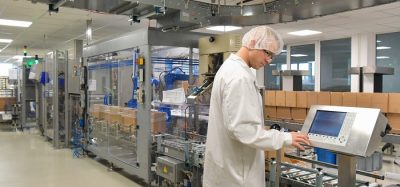Allergan: Living bold and doing what’s right
Posted: 8 January 2018 | Marc Princen - Allergan | No comments yet
Marc Princen, Executive Vice President and President Allergan International, explains how Allergan’s novel ethos and innovative approach makes it stand out from the crowd…
Potential partners for Allergan should take note of this brave message from its Executive Vice President and President Allergan International Marc Princen: “We’re willing to take risk, we’re willing to stick our necks out and we’re willing to do what’s best for patients.”
Allergan’s “bold” approach has put it at the forefront of both the social contract recently composed with US authorities and the ‘Open Science’ model, as well as contributing to “a pivotal year” for its business. This approach is reflected in its corporate moto: ‘Live bold and do what’s right’.
[insert_php] if ( zmember_valid_subscription() ) { echo ‘
DOWNLOAD THE ENTIRE 21st ANNIVERSARY SUPPLEMENT NOW
‘ ; } else { echo ‘
‘; } [/insert_php]
As a leader in medical aesthetics, Allergan spends much of its time and resource on developing medical education so that clinicians understand how to inject its products for the best possible outcome. “We take this as our highest command that we provide not only good products, but we offer injectors the best training programmes possible,” says Mr Princen. “This is important to protect patients and to safeguard the professionals.”
Allergan is slightly different to some other pharma companies because 35% of its business is in medical aesthetics, which is a ‘cash pay’ business funded by private rather than public money. This makes funding “a personal choice,” says Mr Princen.
Most of Allergan’s European business is in eyecare, while in the US it is in GI and CNS. The company has delivered a good performance this year, based on a 9% topline growth in its YTD quarter two results and meeting earning-per-share growth expectations. “We’ve just reconfirmed our expectations for the end of the year and confident that we’re on the right track to meet that.” Allergan launched 11 new products in 2016/17 and completed 14 major pharma and device submissions.
Allergan is at the forefront of Open Science, a model now being considered by several other manufacturers. Partnerships with other drug developers mean that, rather than carrying out the whole cycle of drug development, it can take on interesting compounds, carry out the phase 2 and 3 clinical trials, and take the medicine to the global market.
Speed to market is a significant advantage of the Open Science model. And Allergan can bring new medicines to market relatively quickly because it does not have a huge internal R&D section to filter its projects through. “We’re pretty clean and that’s an advantage.”
The social contract
Allergan’s Chief Executive Brenton Saunders has been at the forefront of the social contract recently composed with US authorities, which promises no price hikes, price increases limited to once a year, and single digit increases. This reflects Allergan’s desire to be “as reasonable as possible” about price increases, says Mr Princen. Outside of the US, Allergan works closely with the relevant reimbursement and payor groups Marc Princen, Executive Vice President and President Allergan International to establish appropriate value for medicines. “We want to bring the right medicine at an affordable price to patients.”
The social contract takes a holistic view of medicines manufacture and delivery and has four principles:
- Invest and innovate
- Access and pricing
- Quality and safety
- Education.
Mr Saunders has warned that the fragile innovation ecosystem has come under assault from price rises and could quickly fall apart if it is not continually nourished with the confidence that there will be a longer term opportunity for appropriate return on investment. He has committed to living by the four principles of the social contract and urged his Allergan colleagues to keep this social contract in mind as they make business decisions that ultimately improve wellbeing.
Taking forward lessons from the past
Mr Princen believes that one of the most significant developments in pharma over the past 15-18 years has been the increased importance of stakeholders and payers and governments into the total business and the weight they have gained versus the normal prescribers of innovative drugs. Another significant development has been the advent of gene therapy and how it will allow personalised medicines going forward. This will make the payor landscape even more important, as these types of treatment can costs hundreds of thousands of dollars per patient. “The payor landscape going forward will become even more distorted than before and we will have to look for solutions to ensure these innovative therapies are utilised.”
For the future, Mr Princen predicts that innovative medicine and gene therapy will change the course of certain diseases and that the funding of these treatments will become an issue for governments worldwide. “This is going to be a challenge for the whole industry. How are we going to fund that innovation going forward? A lot of creative thinking is needed in terms of what type of patent schemes and risk-sharing models can be developed.”
The likes of Novartis and Gilead, which are bringing innovative treatments to market, will develop novel funding models for these drugs, Mr Princen predicts. “The world will somehow adapt to this over the next three to five years.”
Meanwhile, Allergan is playing its part in taking the funding model forward. “In relation to the traditional model our company has taken the lead with not having price hikes on medicines. That shows that we’re people that want to take responsibility and try to find solutions.”
Allergan’s role in the medical aesthetics area and how its offerings will help people to age delivers “a unique prospect”, and this is one of the company’s outstanding achievements in an age when people are living 20 years longer than might be expected. “I’m very enthusiastic about the medical aesthetics space, which we’re world leaders in. We can help people to age in a very respective manner and keep up with the challenges of the future. That’s a very unique aspect of Allergen.”
Partnership working will be key to Allergan’s continued growth. “I think it will be important to do win/win type of partnerships with companies stronger in certain areas and that can add to the strength of Allergan.” And partnerships with leaders in digital technology will be particularly important to deliver products quickly and effectively to customers.
Mr Princen shares one key message with potential partners: “If you want to have a bold partner who is very assertive and very agile, we’re the best.”
Allergan profile
Allergan, at July 2017:
- 18,000+ employees
- Operating in over 100 countries
- In 2016, £1.6bn branded R&D investment
- Seven therapeutic areas
- Employs the open science model









